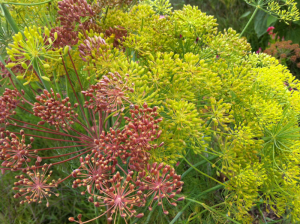Mistakes – I’ve made a few! What about you all? Here on the Garden Club blog we’re beginning a series on gardening mistakes in the hopes that we can all learn something from sharing them! Below are some of the most common gardening mistakes I’ve noted thus far. Any of these sound familiar?
Overworking the soil when it’s too wet
Soil is fragile. If you treat it right, with care and patience, you will be more than rewarded with towering, healthy crops. Too many of us get carried away with external factors – unseasonal, sunny weather, free time to get in the garden, a spring plant sale that comes too early. It is well worth your time to pay attention to what is going on in your ground, and get in there to work the soil only when it’s at a near-perfect moisture level.
The main reason for this lies in the precious air space in your soil. When it gets muddy and heavy, your footsteps, hands, and digging tools will only act to squish out that air space – leaving no room for roots to spread and grow. Conversely, if your soil is too dry and you work it, you run the risk of breaking up aggregates that have formed, and turning your once-chunky tilth into dust.
To test if your soil is right for working, grab a handful of it, squeeze it into a ball, release your fingers, and see if the ball shape remains. If it quickly turned into a solid mass, it’s still too wet!

If it instead forms a loose ball, that easily breaks apart when you toss it lightly in the air and catch it again, it’s perfect and ready to be planted. Aim for this sweet spot for any of your gardening tasks – whether digging or transplanting. Otherwise, wait and avoid one of the most common gardening mistakes out there.
Over-watering tomatoes
When tomatoes plants are focusing their energy on growing strong and tall vegetative structures, they require frequent and deep waterings, and their roots really like to dry down in between waterings. However, one of the easiest gardening mistakes you can make is over watering this crop. To make sure you are never over-saturating their root zones, make sure to wait a few days between watering during this early stage of growth. When the plants begin to flower and then set fruit, however, you will need to really cut down on watering. The lack of water will help the tomato plant enter its reproductive stage, and then flower and grow sweet fruit. Move back to watering only about once a week, maybe twice in really hot areas.
Growing cool season crops in the hot season
It’s important to know and come to terms with your climate. If you have a hot and sunny backyard and you try to grow spinach every summer but it never takes, give up. Try something else! Maybe your micro-climate is instead perfect for hot weather crops like tomatoes, eggplant and okra. Or maybe with luck you can scour some seed catalogues for varieties of your favorite greens that are listed as being ‘heat tolerant’ – you may find some new and delicious types that you never would have thought to try. It’s also worth considering the layout of your garden and what cultural practices you can do to alter the temperature a bit. Plant a tree that provides some shade? Purchase some shade cloth and create a mini-tent to house your greens all summer? There’s nothing a little creativity can’t do to help solve common gardening mistakes like this.
Conversely, don’t try to plant your hot season crops too early! Just because it gets hot in the afternoons in February doesn’t meant it’s time to think about tomatoes. Wait until very late April or early May to get tomato, pepper and eggplant starts in the ground.
Harvesting your winter squash too early
We have already written about how to know when to harvest your winter squash. Please don’t get antsy and decide to cook one up early, just to see! You will only find unripe, tasteless squash, and not the sweet rich flavors that develop over time. This is a mistake you definitely want to avoid this year!
Planting too much zucchini
I have decided that Sonoma County has a zucchini overpopulation problem. The plants grow so easily and can withstand a certain amount of neglect, making them obvious choices for the home gardener. But resist the urge to buy a 6-pack of starts and put them all in the ground. This is one of the more serious gardening mistakes you can make because it often leads to a lot of wasted food and water.
So be smart about quantities. Think twice about crops that produce abundantly, like squash and cucumbers. Plant sparsely, and don’t plant too close together whether you’re growing in containers or out in the field. Leave a good 1.5 – 2 feet between these big plants.
Neglecting to think about biodiversity
Even if you are excited to jump in and plant some annual veggie crops, you probably still have space/time/energy to plant a few flowering native crops that will add biodiversity to your garden and attract pollinators. Find out what plants are native to your area, perhaps some elderberry, yerba Buena or thimbleberry, or contact your local master gardeners for some tips.

Please share with us any gardening questions you may have, or mistakes you hope others can learn from. Together we can all grow banging gardens this season! Next time, I’ll be teaching our Garden Club all about raised beds – how and why to build them. Stay tuned!







 Family
Family

